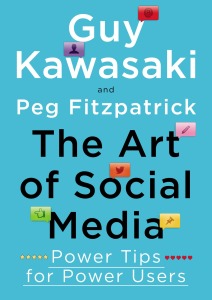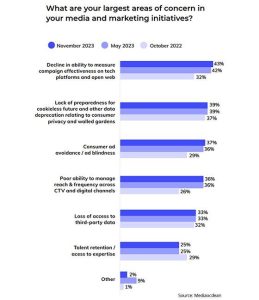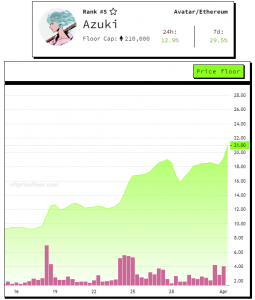— August 4, 2017

geralt / Pixabay
Social media influences almost every facet of our lives. We use Twitter and Facebook to learn about the news. We chat with friends via Facebook Messenger and WhatsApp. We send silly messages to each other through Snapchat and save our favorite things on Pinterest. We broadcast ourselves live with Periscope and document our lives with Instagram.
Social media is deeply embedded in our online shopping as well.
5 years ago, it was enough for a business to simply be on social media. To have a presence. To occasionally post pictures of products as well as updates on sales. Today, things are completely different. Social media is absolutely revolutionizing eCommerce world. Businesses who don’t effectively engage in social media will find themselves left out in the cold while their competitors blow past them.
For Web businesses, effective social marketing represents real value. Social networks offer new ways to reach first-time customers, engage and reward existing customers, and showcase the best your brand has to offer. Your social network profiles and the content you share are as important as a business’ storefront signage and displays in the 1950s.
Why? Social networks are evolving from merely places to find and distribute content; they’re becoming commerce portals. Businesses that integrate social media into their marketing strategy – from customer acquisition, to sales, to re-engagement campaigns – will benefit.
But what changes matter the most? What changes are having the biggest impact on the eCommerce world?
Here are 5 to think about.
#1 – Live Video
Live video is everywhere these days. Facebook, Snapchat, Instagram, Youtube, and Twitter have all doubled down on live video, believing it to be the future of social media. Live video is engaging, it’s visual, and it allows users to engage with each other in a real-time manner. It allows for interaction and face-to-face conversations. Above all, live video keeps users on social media platforms longer, which is why everyone is pushing it so hard.
Facebook’s engineers have been busy tweaking the algorithm to push videos—especially news-worthy or popular ones—higher in the news feed. And all that tweaking has had the desired effect: Facebook now gets more than 8 billion video views a day. A view is defined as anything longer than three seconds, but that is still a massive amount of video being watched on the service (Snapchat is also close to this number).
As you might imagine, live video is also revolutionizing the eCommerce world in a number of ways.
Brands are relying on live video to show off products in new, unique ways. For example, Dunkin’ Donuts took viewers inside their “test kitchen” with live video to show how they create their donuts. Tough Mudder has taken viewers up close and personal with brand evangelists to show what’s required to run their events.
Live product demonstrations and Q&A’s are also becoming increasingly popular. They let brands and companies show off their new products and answer questions about them in real-time. This is a huge advantage compared to simply displaying pictures on a website or video ads.
Finally, brands are using influencers on live video to promote their products. For example, beauty companies may send products to influencers to test out and promote via live video. This gives an authentic feel to the promotions that isn’t available with standard video ads.
Video is on fire right now, and it’s only going to keep getting bigger.
#2 – Hyper-Targeted Advertising
It’s no secret that social media companies collect a lot of data, and that they let advertisers use that data. The granularity and specificity of that data means that, more and more, eCommerce companies are able to hyper-target audiences.
As the Washington Post notes:
Facebook keeps ads “useful and relevant” in four distinct ways. It tracks your on-site activity, such as the pages you like and the ads you click, and your device and location settings, such as the brand of phone you use and your type of Internet connection. Most users recognize these things impact ad targeting: Facebook has repeatedly said as much.
This article goes on to state that Facebook collects an astonishing 98 different points of data on each user!
The implications for business are astronomical. In the past, an outdoor gear manufacturer could generally advertise to audiences by taking out an ad in Field & Stream magazine. Now, thanks to the data available to them, they can specifically target men ages 22-50 who like the National Rifle Association, prefer Budweiser, have expressed an interest in camping, and also like to read Field & Stream.
As you can imagine, this type of specificity opens up new worlds for eCommerce companies. They no longer need to spray large amounts of money into ads, hoping they manage to hit the right audience. Now they can know they they’re on target and that their ads will resonate with the audience.
Additionally, companies can see exactly how well their ads are performing – how many clicks they’re getting, how many people have seen the ad, etc.
The advances in social media advertising are allowing companies to be much more specific in their ad spends and measure the results much more effectively.
#3 – Constant Brand Monitoring
Thanks to the search and alert functions provided by social media analytics platforms like Mention and SproutSocial, companies can now constantly monitor for mentions of their brand and engage with customers.
For example, if a customer is upset with a company and mentions them on Twitter, that company can instantly reach out and offer help. They can offer discounts to customers who are having problems and thank customers for their support.
With a dedicated support handle, you don’t have to worry about questions from followers getting lost in a series of brand mentions. Plus it’s easier to stay on message and maintain a consistent tone across the channel. Switching from promotional to conversational to support can be tricky to maintain, especially during busier times.
If a customer is happy with a company, the company can share that positive review on social media and invite others to leave reviews. Or if a customer leaves a negative review, the company can personally reach out and seek to fix the issue.
If a news story breaks about an eCommerce product, the brand can get out ahead of the story and shoot down false rumors or spread good news.
eCommerce companies that aren’t constantly monitoring their brands are likely to fall behind those that do. After all, everything moves ten times faster in the social media world than in real life.
#4 – The Advent of Chatbots
Artificial chatbots are also playing an increasingly important role for eCommerce companies. For example, if a customer visits a company’s Facebook page, an automatic chatbot can engage in Facebook Messenger, offering discounts, the ability to solve problems, and even personalized recommendation.
Paul Chaney writes about how the company Spring is using a Facebook Messenger bot:
A good example is mobile-first e-commerce retailer Spring, which launched Spring Bot, a personal shopping concierge powered by Messenger and Zopim live chat, reported the fashion blog Fashionista.
To start the clothes-buying process, the bot asks the customer what he/she is looking for and then presents options from which to select, including clothing, shoes, or accessories. Customers can see thumbnails with links to the products that they can purchase using their mobile device.
As more people take to messenger services rather than the social media platforms themselves, chatbots are going to become even more important. And with well over a billion people using Facebook’s standalone messenger app, it’s not surprising that Facebook is giving companies resources to develop chatbots. They know that Messenger bots are going to be big.
Additionally, chatbots are becoming more important as younger consumers steer away from older communication methods such as email and depend on instant communication methods, such as Facebook messenger and WhatsApp.
We should expect to see bots becoming more present in messenger apps in the future as companies realize their power.
#5 – In-App Purchase Options
In the past, if you saw an item on Instagram and wanted to purchase it, you had to exit the app, open your browser, find the site, and then make the purchase. That method is quickly fading away as social media platforms integrate buy buttons.
Now, it’s possible for eCommerce retailers to incorporate buy buttons directly into their advertisements within social media platforms. This reduces buyer “friction” and makes impulse buying much easier. If a person sees what they like, they can simply click the buy button and immediately purchase it.
Additionally, marketing platforms like Soldsie are letting companies instantly add items to a shopping company (assuming the customer agrees) when they make a comment under an Instagram or Facebook photo. This means that if a customer sees a t-shirt he likes, he can immediately start the purchase with something as simple as a comment. This makes it incredibly easy for customers to purchase in the moment.
Conclusion
With the incredible societal shifts caused by the internet in general and social media in particular, it’s no surprise that eCommerce is being caught up in the wave. Social media is offering new and exciting opportunities for online business, and we should only expect these to increase.
With platforms constantly evolving and finding new ways to personalize shopping, social media will play an even bigger role in shopping in the future. Depending on your ability to avoid impulse buys, it’s either a fantastic or terrible time to be alive.
Digital & Social Articles on Business 2 Community
(16)
Report Post









